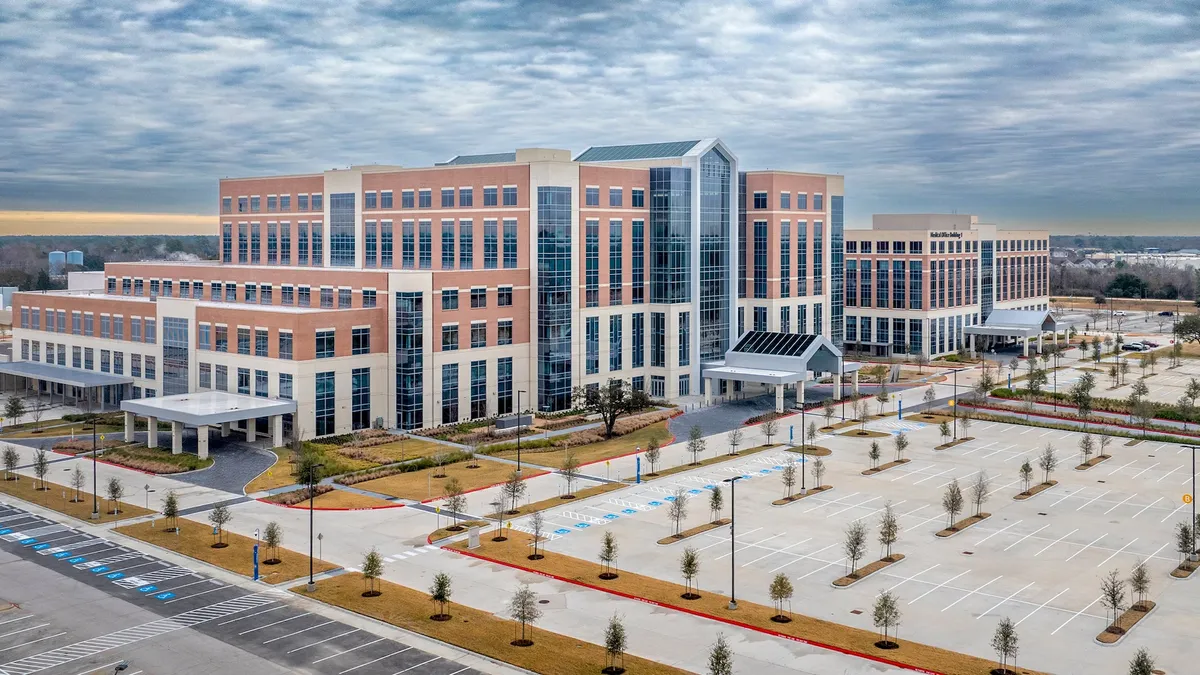While Construction Dive selected just six women to feature in our recent series on women in construction, we recognize that for each of them, there are hundreds more contributing meaningful work to the industry. In response to our announcement of the series, Construction Dive received a number of messages from readers offering their own experiences as women in the industry, expressing support for their female colleagues or sharing the stories of other women who are leading the charge to change the field's demographics.
As part of the series, we heard from one woman who developed a deaf ear to comments about her race and gender on the job site, going on to work on projects including the Walter E. Washington Convention Center and the Smithsonian's National Museum of African American History and Culture, both in Washington, DC. Another woman, the only female CEO among the country's top 20 homebuilders, discussed the importance of diversity of thought and background in the workplace today. And another woman talked about how considering the perspectives of different future users when designing a space can help to tackle biases head on. The feedback we received from our readers echoed and expanded upon those experiences.
While each of these women's stories differs, they share a common thread in that they show the effects, positive and negative, of the underrepresentation of women in the industry. Below, we've collected a number of responses from those who reached out as a result of the series:
Editor's note: These posts have been edited for length and clarity.
Melanie Drennen, account manager, Radius Track Corporation, Raleigh, NC:
I have been in construction for some time, on the manufacturing side, always in sales. There are definitely challenges we as women face, and I am very lucky to work for a company that supports me and its female staff. I have had many interesting instances and conversations along the way in my career but strongly believe they all contribute to who I am and only make my drive stronger to work harder and be more impactful where I am able.
Doreen Cannon, tradeswomen committee chair, Cleveland Building and Construction Trades Council:
Because there are so few women in [trade] careers — still between 3% and 4% — there are few role models. Because of this, women do not consider [the trades] an option to them until they meet and talk to one of the amazing women across the country doing this work and can picture themselves doing it also. I would suggest women do their research and learn everything they can about the trade they are interested in. A career in the trades is not for all women, just like it’s not for all men. The work is hard — hot in the summer and freezing in the winter — but there is nothing more satisfying than working with your hands, completing a project and saying to your family or children, 'I helped build that.'
Kristina Milian, head of communications at PlanGrid, in San Francisco, on CEO and co-founder Tracy Young:
Prior to co-founding PlanGrid [a construction-document management software], Young helped build several hospitals as a construction engineer. During the spring of 2016, PlanGrid completed a comprehensive analysis of employee salaries to compare the compensation of men and women performing similar work. We’re happy to confirm that at PlanGrid, men and women are paid equally. In early December, the company took the White House Equal Pay Pledge because PlanGrid recognizes that businesses must play a critical role in reducing the national pay gap. The hope is that this inspires other executives in the construction and technology industries to open their books and acknowledge any gender bias located in accounting’s spreadsheet.
Ashley Waghorne on Diane Waghorne, president, Tech Safety Lines, Carrollton, TX:
After the events of Sept. 11, 2001, Diane was determined to figure out a way to help people escape dangerous situations occurring at height. Diane initially began a search for existing safety devices, which led her to a U.S. military manufacturing plant that was in the process of developing a small, compact device used with a high-heat line. Tech Safety Lines purchased the patent from the military in order to provide private citizens a means of emergency egress from elevated workplaces. Using this patent as a product platform, the company has since developed several rescue kits and patented its own line of safety products. From there, the company developed several safety training courses that educate workers about the safety procedures specific to their industry and the certifications that allow them to safely perform their task at height. Diane has dedicated the last 16 years to ensuring that workers at height are properly trained to rescue themselves and/or their fellow workers from life-threatening situations and have the best equipment to do so. She prides herself in being a certified women-owned business, in addition to being the first female to sit on the American National Standards Institute's sub-committee for rescue and the safety steering committee of the American Wind Energy Association.
Tracey Mitchell, diversity compliance manager, New NY Bridge Project (Tappan Zee Bridge):
Promoting diversity in the construction industry is difficult since trade labor has traditionally been a career for men. Today, women are gaining more interest. However, there are challenges at entry and on the job in this non-traditional employment. I believe introducing this lucrative career to young people will assist with building a diverse workforce in the construction trades.
Sara Schuttloffel, director of public relations and communications, Ironworker Management Progressive Action Cooperative Trust, Washington, DC:
To succeed in changing the job site dynamic, there must be a critical mass of initiatives that are rigorously monitored and driven through. In other words, we must walk the talk and make diversity and inclusion part of the culture. While pre-apprenticeship programs give women a competitive advantage, it is not enough. It would take a cultural revolution in the industry to create equal opportunities. Retention is a major challenge to improving diversity and inclusion in the construction industry. The focus shouldn’t be just on getting underrepresented groups hired but also on retention. What’s the point in having gender and culturally sensitive hiring practices and policies if the retention levels are low? We must create opportunities for underrepresented groups to have full careers rather than focusing just on job placement.
Elizabeth Bovard, executive vice president, Builders Exchange of Michigan, Grand Rapids, MI:
Over the past 15 years, I have observed the emergence of women in the traditional roles of a male-dominated field. I have seen the construction culture slowly shift to be more accepting of this change. I am honored to know successful women who overcame gender bias and have helped make a difference for those following in their footsteps. Everyone derives success from the same tools — some of the most important in construction are hard work, knowledge, drive and great communication.
Ivette Vanas, senior vice president of risk management, Skanska USA, New York, NY:
I am proud to be one of the founders of the Skanska Women’s Network in the U.S., which we launched several years ago. We have chapters of the network across most of our geography in the U.S., and we have worked to mentor, develop and retain women at Skanska. The Women’s Network has provided the groundwork for inclusive conversation across our company, and given everyone a greater understanding of different perspectives. It particularly has been rewarding to see Skanska’s male leaders grow in their understanding both in how the network positively impacts our employees and our business, and their role in helping women in our company and our industry.






















